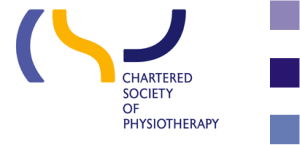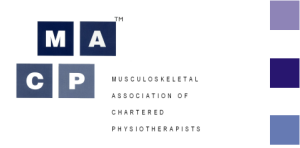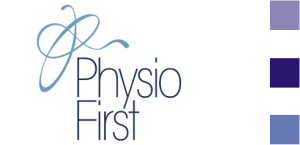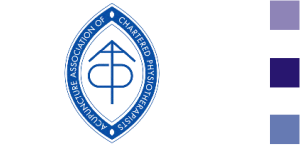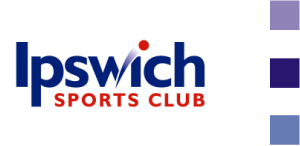Physiotherapy helps restore movement and function when someone is affected by injury, illness or disability.
Physios help with back pain, sudden injury and long-term arthritic conditions as well as sporting injuries.
Physiotherapists help people affected by injury, illness or disability through movement and exercise, manual therapy, education and advice.
They maintain health for people of all ages, helping patients to manage pain and prevent disease.
The profession helps to encourage development and facilitate recovery, enabling people to stay in work while helping them to remain independent for as long as possible.


Physiotherapy takes a ‘whole person’ approach to health and wellbeing, which includes the patient’s general lifestyle.
At the core is the patient’s involvement in their own care, through education, awareness, empowerment and participation in their treatment.
You can benefit from physiotherapy at any time in your life. Physiotherapy helps with back pain or sudden injury, managing long-term medical condition such as asthma, and in preparing for childbirth or a sporting event.


Acupuncture
Acupuncture is a technique of inserting fine needles into particular points of the body. It originated in China and, according to traditional Chinese medicine, works by restoring balance in the patient's vital energy ('qi'). It may be used with other physiotherapy skills to help reduce tissue inflammation and pain and to promote recovery. Acupuncture needling has be shown to stimulate the body's own pain-relieving chemicals (endorphins). Members of the Acupuncture Association of Chartered Physiotherapists have additional training in this area.
Biofeedback
Biofeedback is a form of electrotherapy that uses electrical pads to generate information about muscle contraction, postural alignment, balance control and or other physiological processes, by sound or vision. For example, a system might bleep when someone contracts the correct muscle, or might show the level of contraction on a computer-generated graph. This extra feedback can help people to understand and control their problems.
Electrotherapy
Electrotherapy is a term for treatment that uses various types of electrical equipment aiming to promote healing, tissue repair and reduce pain. It includes Biofeedback, Interferential therapy, Laser therapy, Pulsed shortwave therapy, Ultrasound and TENS.
Ergonomics
Ergonomics is the science of designing objects, systems and environments to ensure that they are fit for use, taking into account people's capabilities and limitations. For example, at a computer workstation, ergonomics tell us what equipment we need (for example, an adjustable chair), and in what position it should be used, to avoid muscular strain and repetitive strain injuries.
Exercise
Exercise is any physical activity that works your body at a greater intensity than usual. Its benefits include:
- toning and strengthening muscles
- increasing joint stability
- strengthening the cardiovascular system (the heart)
- aiding weight loss
- helping retain bone density
- boosting the immune system
- increasing well-being, by producing endorphins and presenting opportunities to be active outside
Regular, moderate exercise can aid a range of conditions that physiotherapists treat. In addition, a physiotherapist may design a tailored programme of exercises to strengthen particular groups of muscles, or may recommend particular classes.
Interferential therapy
Interferential therapy is a form of electrotherapy that uses electrical pads and stimulates peripheral nerves at a low frequency without pain and discomfort in the soft tissue. It is thought to help relieve pain and stimulate muscles, and to increase blood flow to the area and reduce swelling.
Lifestyle advice
Lifestyle advice is often used in physiotherapy to enable a patient in overcome or manage a condition. It could include advice on exercise, sport, other physical activities such as walking or dancing, diet, posture, or other daily activities such as lifting at work or doing housework. By helping a patient to understand their problem in practical terms, a physiotherapist can enable them to manage the condition more effectively for themselves.
Manipulation
Manipulation is a manual therapy that involves precisely handling and mobilising joints or parts of the spine, sometimes moving them further than they would normally move. This may result in a clicking sound, caused by gases within the liquid of the joint. Manipulation can be used in combination with massage. It reduces pain, increases movement and speeds up recovery in certain types of lower back and neck problems. Members of the Manipulation Association of Chartered Physiotherapists have additional training in this area.
Manual therapy
Manual therapy is any hands-on therapy. Physiotherapists use their hands in many ways - for example:
- in an assessment or examination, to touch and feel injured or swollen tissues
- during movement analysis, to examine and feel how muscles, tendons and joints move
- to feel whether a muscle is in spasm
- in treatments such as massage, manipulation, positioning and other soft-tissue and stretching techniques
Massage
Massage is a manual therapy that involves handling soft tissues, such as muscle, tendons and ligaments, using pressure and stretching movements. It may help improve circulation, aid drainage of excess fluid, improve movement, relieve pain and aid relaxation. It may help a range of conditions, including problems with the neck, back and limbs, headaches, and stress.
Postural advice
Postural advice involves helping a patient to become aware of their current posture, and working with them to improve their posture. 'Posture' means the way you hold yourself when sitting, standing, lying down or moving around. Posture is often improved by breaking old habits. This may be done by finding ways to remember to regularly check and improve one's position, and through exercises to strengthen certain muscle groups.
TENS (transcutaneous electrical nerve stimulation)
TENS is a form of electrotherapy that produces symptomatic pain relief by stopping the nerves sending pain signals to the brain and stimulating the release of endorphins - our bodies' natural painkillers. TENS machines are increasingly available in chemists for personal use. The device usually consists of a small battery-operated unit and electrodes with gel pads that stick to the skin.
Ultrasound
Ultrasound is a form of electrotherapy that uses high-frequency sound waves (vibrations) to treat injuries to muscles, tendons and other soft tissues. It stimulates blood circulation and cell activity, speeds up the healing process, reduces scars forming, and may provide pain relief.



